For most pet parents, leash training is a necessary evil. It can be a challenge, especially if you’ve never done it before, but it’s also vitally important to the safety of your pup and to the enjoyment of your walks together. In this guide, I’ll cover all the basics you need to know for leash training your puppy.
Leash Training Your Puppy: A Comprehensive Guide
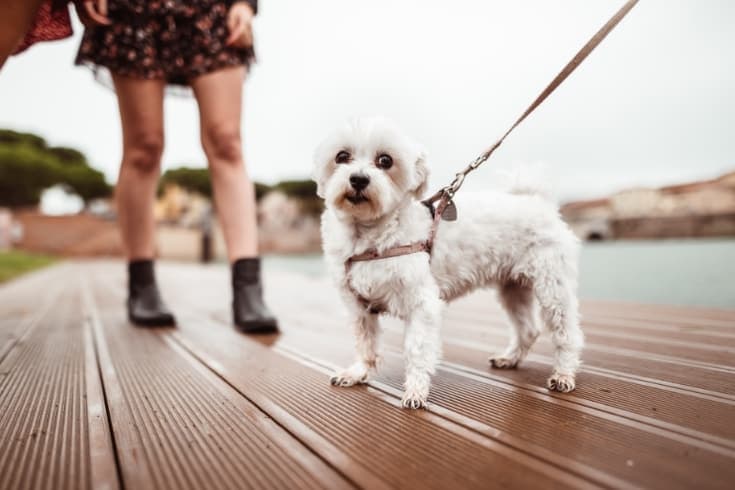
With leash skills training and positive association, the process is pretty simple. On your leash training journey, you’ll first need a collar and harness that fit your pooch comfortably.
I usually recommend a flat collar for tags. It depends on what you’re comfortable with. Since I have sighthounds, I tend towards martingale collars. Martingales are also suitable for other dogs but are made specifically for dogs whose neck is bigger than their head.
When putting on a collar, make sure the collar isn’t too tight. You should be able to slip two fingers between the collar and your puppy’s neck with ease. I say this specifically because if your dog’s roughhouse or they get caught on something, it can lead to injury.
Next up is a good leash, one that isn’t too long or stiff so that it won’t hurt your dog if he pulls against it but long enough to give him some freedom while walking. Personally, I like a leather leash that’s about six feet long. The softer leather will soften even more over time for a very comfortable walking experience.
Finally, bring along plenty of treats! Treats are essential for positive reinforcement and positive association during leash training sessions.
When to Start Leash Training Your Puppy
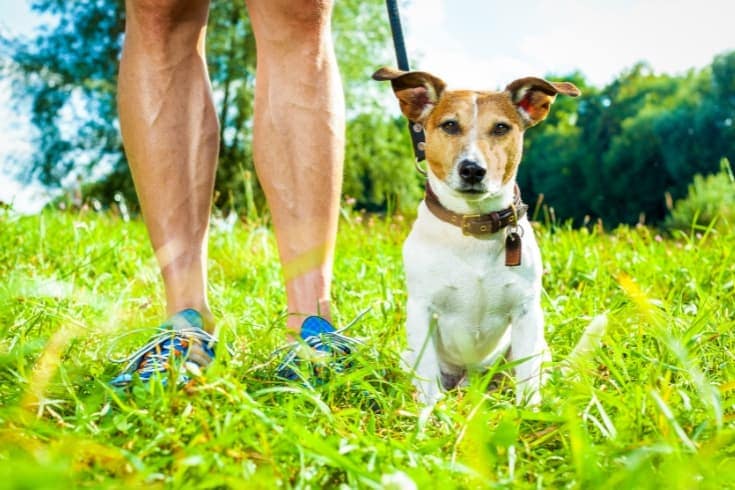
It’s best to begin learning leash skills as soon as possible after bringing home your puppy or adult dog. This will help them know leash manners for when they’re in public.
Puppies between 8 and 10 weeks old have had enough time with their mother and littermates that they are ready for the next step—that’s when you should introduce them to leash walking. While it may seem early, this is actually an important time for puppies to learn proper behavior when out in public or on a walk.
Things You’ll Need for Leash Training
Besides picking up supplies like poop bags and treats (always necessary!), there are a few items you will need specifically for leash training.
Foremost, choose a properly sized collar, head halter, or harness—make sure it fits snugly but isn’t too tight! Depending on your preference, you may also want to pick up a retractable leash (just make sure its length isn’t too long) or opt for an adjustable standard one instead.
To recap:
- A proper collar that is snug but not tight. You should be able to fit two fingers between your dog’s skin and the collar itself.
- You’ll also need a leash and a lead or lunge line.
- There are several types of leashes you can use, but the most popular ones are the standard 6-foot leash and the retractable lead, such as a Flexi. While I don’t recommend using a Flexi, it’s up to you which to use.
Why Is Leash Training Important?
For starters, leash training helps instill good leash etiquette in your pup while walking in public areas. That includes everything from not barking at other dogs to not pulling on their lead during walks.
Being able to control your dog while out on walks helps keep them safe in potentially dangerous situations like crossing roads or passing other animals. Properly trained dogs are also better behaved around people outside of their family or circle of friends.
Dog Leash Laws
Depending on where you live, there may be specific laws related to walking your dog on a leash. So look into this before starting any outdoor adventures! All dogs should be kept leashed when out in public places unless they are in an enclosed area specifically designated for off-leash playtime (such as a fenced-in dog park).
Keep in mind that some cities might require particular types of leashes, such as a traffic lead, heavier leather leashes, or those made from certain materials (such as nylon). I haven’t found too many places that require a certain kind of leash. However, in some cities, they do ask for a dog to be on a traffic lead while out for a walk.
Dog Leash Length
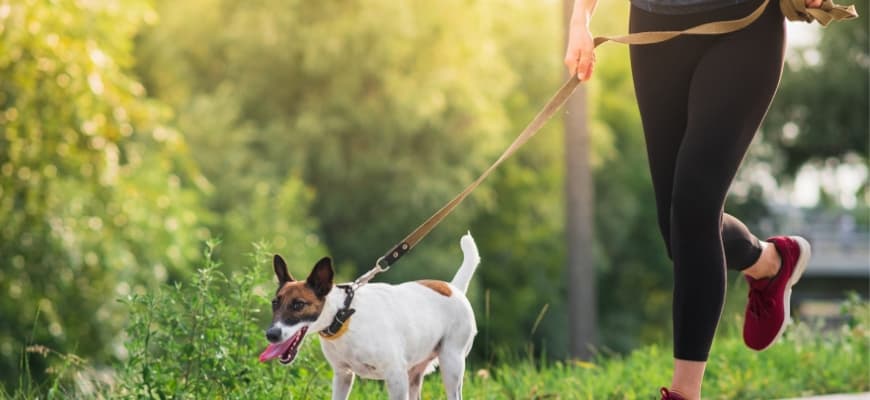
Choosing the right length for your dog’s leash is key in making sure they don’t wander away from you and giving them enough room that they’re comfortable. The general rule of thumb is that for puppies until about 18 months old, use a 6-foot long leash. For adult dogs over 18 months old, 8-foot leashes are okay.
Tips on Leash Training
1. Start Indoors
The first step in leash training is getting your pup accustomed to wearing a collar and being tethered to something for the first weeks. And that something is you! I had to have one of my dogs tethered to me for 3 weeks before he got the idea to tell me he needed to go, instead of having an accident.
This is best done indoors, where there are no distractions or temptations that could cause them to veer off course. Let them wear the collar and leash around the house for short periods of time while you supervise them closely. Give them treats as they get used to it, and reward good behavior with praise.
2. Take It Slow
Next, start taking your puppy outdoors on short walks but keep them at heel (more on how to train this below), using the leash as a guide and occasional reminder of who’s in charge.
Praise them when they stay by your side, but be sure not to pull too hard on their leash or scold them if they wander off. Simply use gentle tugs or coaxing words until they return to you. As long as you remain consistent with positive reinforcement, soon enough, they should understand that staying by your side is the desired behavior.
3. Get Some Help
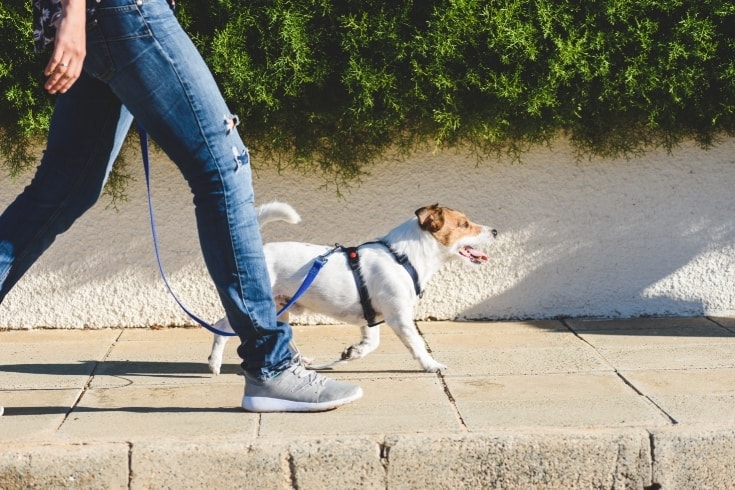
If you struggle with leash training, I recommend hiring a professional dog trainer who can assess the situation and give you advice tailored to your pup’s individual needs and temperament type.
Professional trainers offer one-on-one guidance that can be very helpful in instilling good habits into your pup from day one, which will make future walks much smoother down the road!
Basics of Leash Training
Preparing Your Puppy for Leash Training
The first step in leash training is preparing your puppy for it. This means introducing them to a collar and leash. When introducing your puppy to their new gear, it’s important to make sure they have a positive experience so they can develop a healthy association between wearing the items and having fun adventures with their human.
Start by letting them sniff the collar and leash before putting them on your dog. Once it’s on, let them get used to how it feels by taking them on brief trips around the house or yard that end with treats or playtime so they can associate their new gear with good things!
Teaching Your Pup to Heel
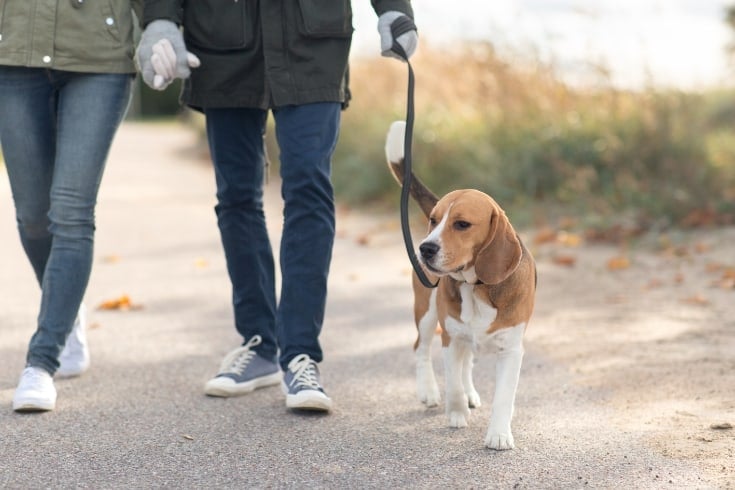
When out for walks, teaching your pup to heel—or walk close beside you—is essential for safety reasons as well as preventing them from pulling too hard on their leash or getting distracted by squirrels or other dogs at the park.
When teaching your pup how to heel properly, start off in an enclosed area, such as a fenced-in backyard, where distractions are minimal.
Once they understand what “heel” means in this environment, you can move onto more distracting settings, such as parks and busy streets. As I always emphasize, when teaching commands like “heel,” consistency is key!
Make sure you reward them every time they give you the desired response so that they know what behavior we expect of them and that they look forward to following your commands!
Dealing With Distractions
Letting your puppy take in all of their surroundings while out for walks is great for socialization but can distract them when trying to teach proper leash etiquette.
Keep treats handy and reward them each time they pay attention without being prompted so that when distractions arise (which will happen!), there’s still something positive associated with paying attention to you instead of barking at other dogs.
You must also remain consistent in discipline. If/when your pup misbehaves during walks (pulling too hard on their leash), don’t forget about corrections but do so calmly without raising your voice; otherwise, your puppy won’t respond positively when hearing “No!”
Dos and Don’ts
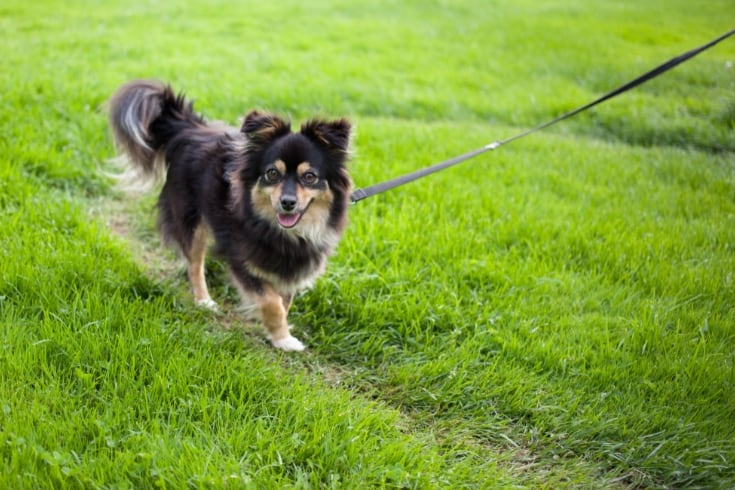
Do Start Early
I can’t stress this enough, the sooner you start leash training your puppy, the better! Begin as soon as your pup has received all necessary vaccinations. This way, they won’t be exposed to any potential health risks while exploring outdoors. Plus, it will give them more time to become accustomed to their new harness or collar before tackling longer walks outside.
Don’t Expect Perfection Overnight
It takes time for pups to adjust to wearing a leash and collar and getting used to being walked around on them. Remember that each dog learns at their own pace—just like humans!
Some dogs require particular types of training, such as with my sighthounds. With them, it’s a ‘What do I get out of this’ mentality rather than a canine like a golden retriever who is more biddable.
Don’t expect immediate results; instead, focus on taking one step at a time until they get comfortable with their new routine. Patience is key here! Take baby steps towards your goal to ensure you don’t overwhelm them. This helps with their comfort level.
Do Reward Good Behavior
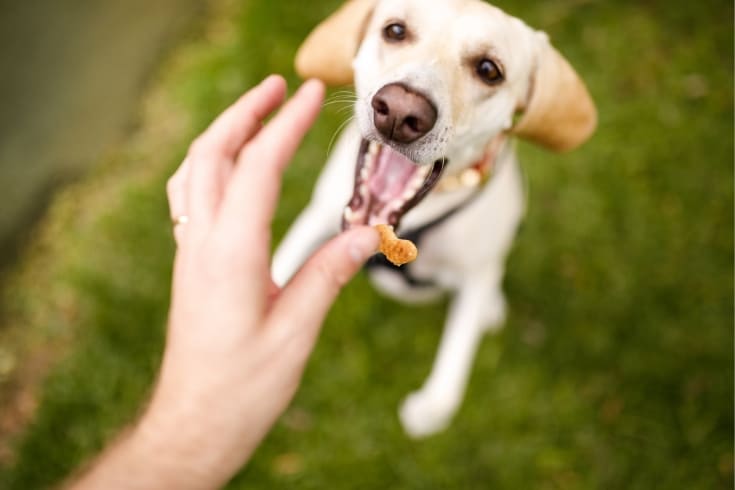
Another thing I can’t stress enough, rewarding your pup for good behavior is an important part of the learning process for leash training. Be sure to reward positive behaviors like walking nicely in their harness or collar with treats or praise. This will help reinforce desired behaviors quickly. And don’t forget to give yourself a pat on the back too!
Don’t Forget to Supervise Your Pup
If you want your pup to learn how to walk nicely on a leash, it’s important that you supervise them closely while they’re learning.
You’ll need to keep an eye out for any potential distractions that could take away from proper leash training (e.g., other dogs or people). That way, if things go off track during their walk, you can address any issues immediately and get back on track quickly!
Do Set Boundaries
It’s important that you set boundaries for leash training your pup – after all, consistency is key! Setting rules like not pulling ahead or barking excessively when meeting new people can help provide structure while teaching proper leash etiquette. Ultimately, this will help create a safe and enjoyable experience for both you and your pup during walks together!
Don’t Give Up Too Soon
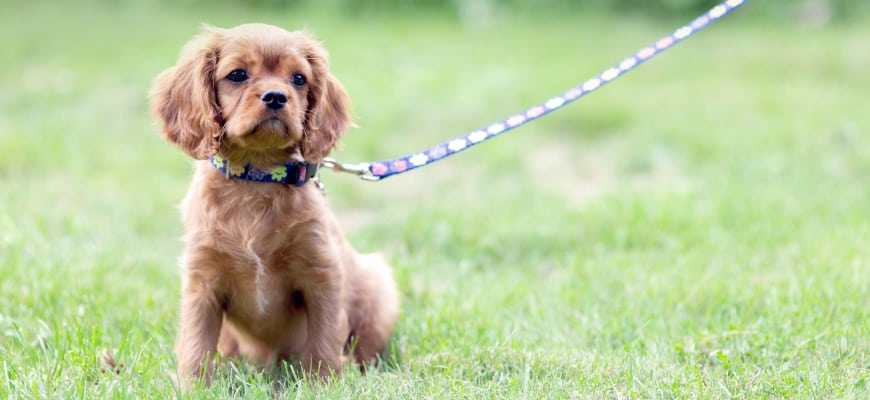
It’s normal for puppies (and humans) to feel overwhelmed when beginning something new—like learning how to use the harness properly—so don’t give up too soon if things don’t seem perfect right away.
Just remember that practice makes perfect – keep at it until both you and your fur baby are feeling confident about using their harness correctly during walks together!
Conclusion
Not only does proper training ensure that both yourself and your pup stay safe during walks together, but it also helps build trust between the two of you.
Plus, regular walks with your four-legged friend can help improve their overall behavior by providing mental stimulation and helping burn off excess energy that could otherwise lead to destructive habits like chewing or barking excessively at home!
